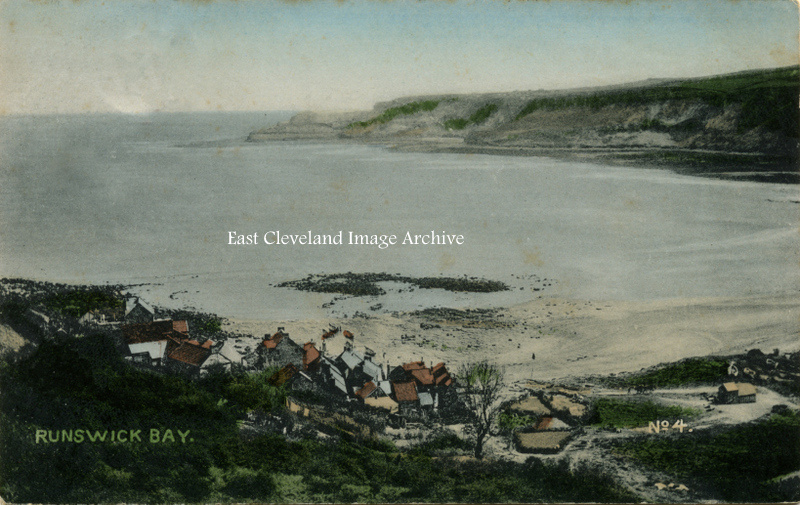
A hand tinted postcard view of Runswick Bay, complete with the walled drying greens for the fishermen’s nets. The former alum workings of Kettleness can ve seen at the centre of this image.
Image courtesy of Ann Wedgewood and Keith Bowers.
|
|
||
 A hand tinted postcard view of Runswick Bay, complete with the walled drying greens for the fishermen’s nets. The former alum workings of Kettleness can ve seen at the centre of this image. Image courtesy of Ann Wedgewood and Keith Bowers. 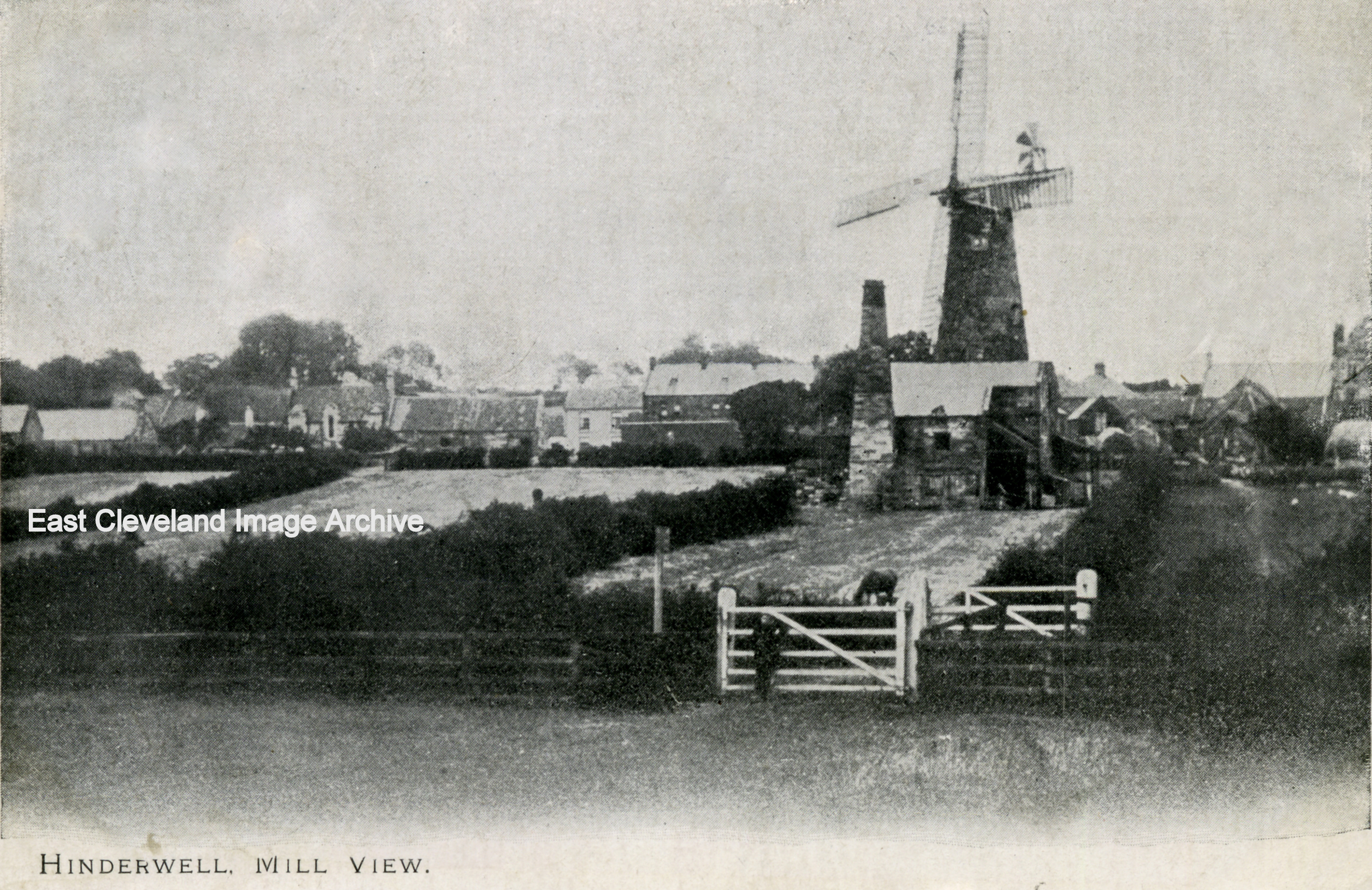 A view of the windmill which this time includes Hinderwell village in the background. This postcard view (postmarked July 1904) shows the windmill in apparent working order. Danny Plews aked: “Can someone tell me if this windmill was owned by the local coal merchant? I can remember, as a boy sleeping in this Windmill, when I was invited by HIM – forgotten the name! He had someone who was in Friarage Hospital at Northallerton along with my sister Janet!” Anthea Ellis advised: “First mention of a windmill in Hinderwell was 1374, most probably wooden, only designed to last 50 years. The Royal George Union Milll stood until the middle of the twentieth century, and possibly had it’s origins in the eighteenth century. Local tradition has it that this mill was erected in 1820, and it may be that the name came from a sense of royal pride following the coronation of King George IV in that year. It stood seven storeys high, powered by four sails and contained two pairs of French stones and cylinders. Isaac Moon, also the miller at Dalehouse Water Mill, (Baines Directory 1822) erected the mill. His son George inherited the entire estate. Shares to convert to a Union Mill were offered for sale in 1868 in an effort to improve business (Whitby Gazette Notice); Shares £5, Shoulder of Mutton Inn, 6 o’clock Tues 3rd November 1868. A steam engine was installed in 1870. Mentioned in a conveyance in 1873 as “a wind corn mill with steam mill and having two granaries”. It ceased production towards the end of the nineteenth century, with the machinery removed about 1915. The village held dances on the floor of the old windmill. The building was dismantled in the mid 20th century, and the stone sold to build a house in Lythe.” Image courtesy of Ann Wedgewood and Keith Bowers. thanks to Danny Plews and Anthea Ellis for the updates , 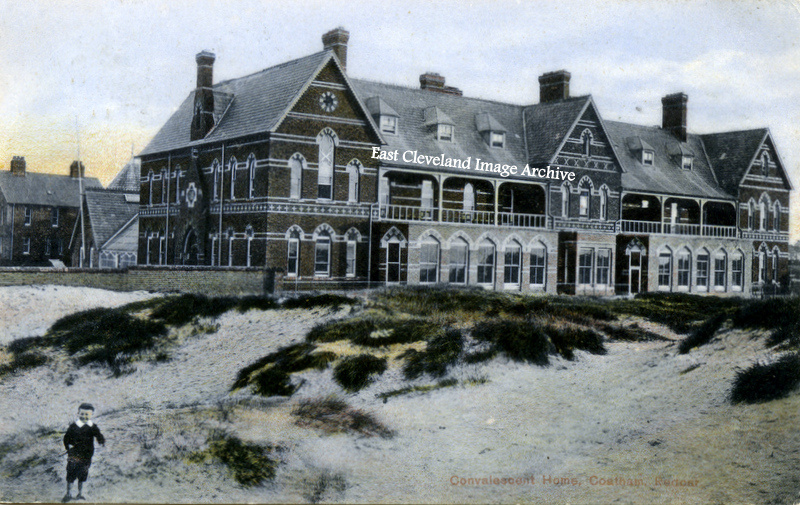 Dating from 1905 this postcard view shows Redcar Convalescent Home which used to stand more or less where latterly Redcar Bowl was; presently an open space. The forefront of the convalescent home at Redcar had a large area of sand banks which separated the building from the beach. The convalescent home owed its existence to Teresa Newcomen and the Reverend John Postlethwaite (vicar of Christ Church, Coatham); it cost £4,500 to develope. It was built behind the Sandbanks Sand; facing the sea near to Newcomen Terrace in 1861. During the 1914-18 war, the 12th Battalion Green Howards were billeted here. During the 1939-45 war, the Royal Welsh Fusiliers were billeted. It was bought by Redcar Borough Council and demolished in 1951. Cynthia Greaves (nee Bareham) asks: “My Grandfather John George Bareham borne 12/12/1876 lived in The Caretakers cottage in the Coatham Convalescent Home. When his parents celebrated their Golden Wedding Anniversary, photos of the home show pictures of my Great Grandmother and family in the home. Please are you able to tell me if I’m correct in believing that my Grandfather was Caretaker and my grandmother Charlotte Ann Bareham (nee Neeve) was possibly cook or house keeper at this time. Both remained in the lodge until their deaths. Please can anyone advise me as to where I may find help in acquiring this information.” Whilst Anna Rowe asks: “I am delighted to see this picture. Is it possible to see records of people who were treated in the Home? My great-grandmother and her little sister were there in the 1870s with tuberculosis. The family believes that the Matron at Coatham saved my Great- Grandmother’s life but her sister died there, aged 2 years 6 months. I would really like to know more. They were Mary Hannah and Lilian Mary Rochester.” Image courtesy of Ann Wedgewood and Keith Bowers, can anbody assist with the queries from Cythia Greaves and Anna Rowe? 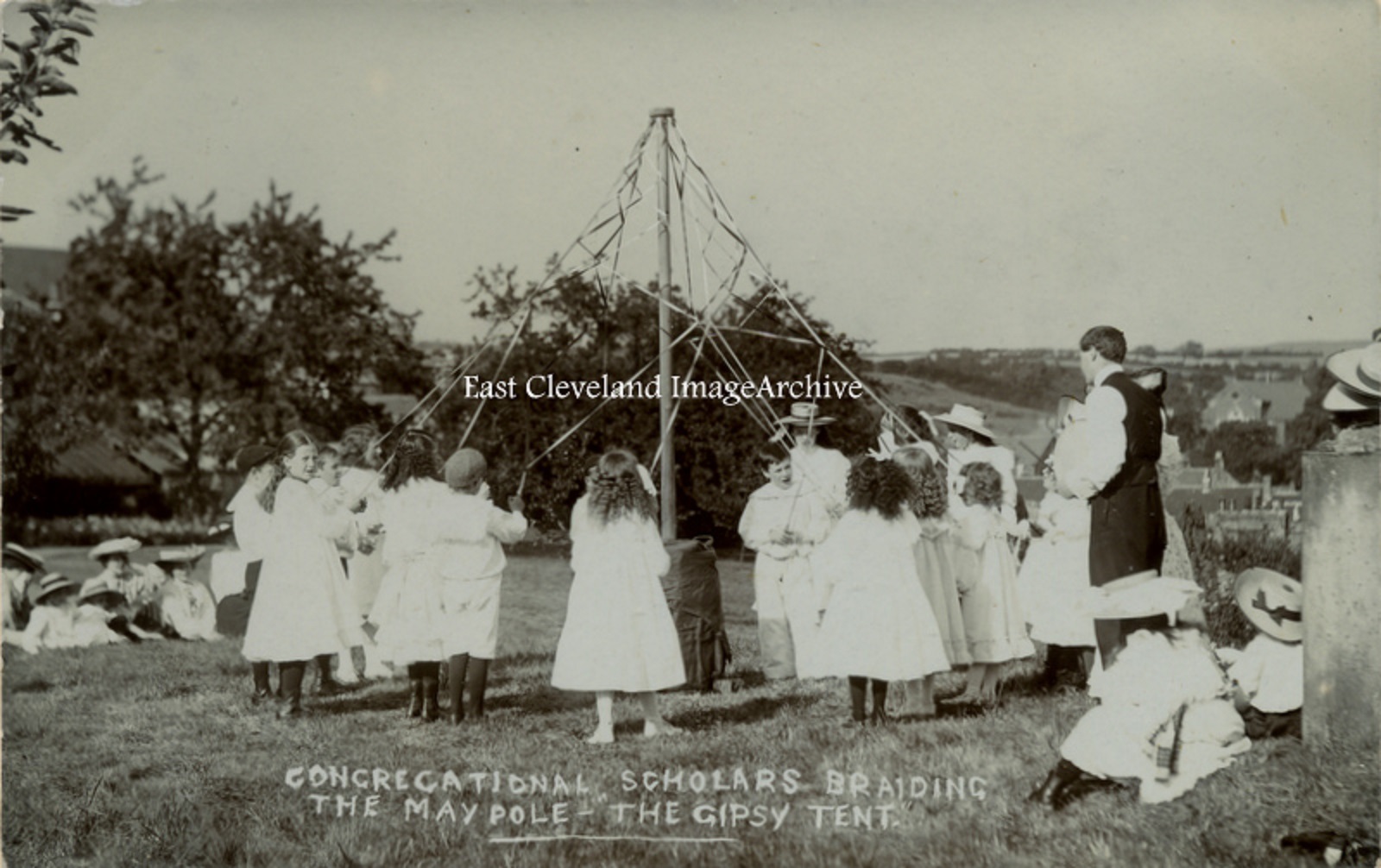 Known to be the Loftus Congregational Sunday School pupils performing a maypole braiding, possibly at a picnic? Can anybody assist with any details; as to where and when? Image courtesy of Ann Wedgewood and Keith Bowers. 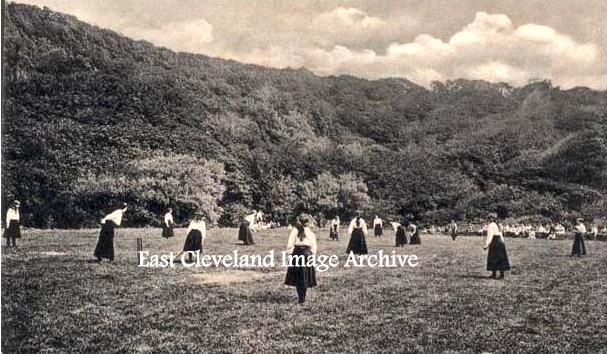 I wonder if they won more matches than the mens England team? Not the usual attire for a cricket team; but the Towers School pupils Saltburn were of course all girls in the photograph. They are shown on their ‘playing field’ under the Halfpenny bridge over the valley; in those days there was no miniature railway to get in the way! Image from a collection received by the Archive which included promotional material for Towers School. All the Towers School images were loaned to us by a person who does not wish to be named, to whom we are grateful. 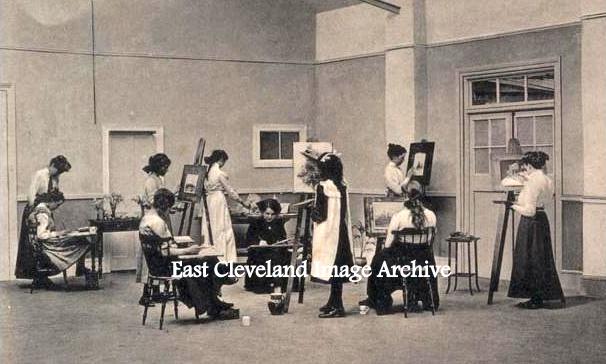 Once again a Towers School photograph, not a lot of pupils in the class; the range of subjects available gives an indication of the school’s aims – “To provide an education to prepare young ladies to take a proper place in society” – which the promotional material projects. I wonder what the subject to be drawn, sketched or painted were? Image from a collection received by the Archive which included promotional material for Towers School. All the Towers School images were loaned to us by a person who does not wish to be named, to whom we are grateful. 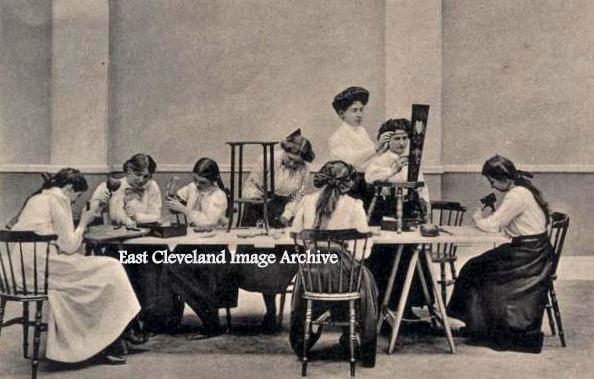 A lovely photograph of pupils from the Towers school Saltburn; not quite what you would expect in a woodwork class. The style of dress gives an idea for dating the image; but in today’s world of ‘elf and safety’ clearly not appropriate! Image from a collection received by the Archive which included promotional material for Towers School. All the Towers School images were loaned to us by a person who does not wish to be named, to whom we are grateful. 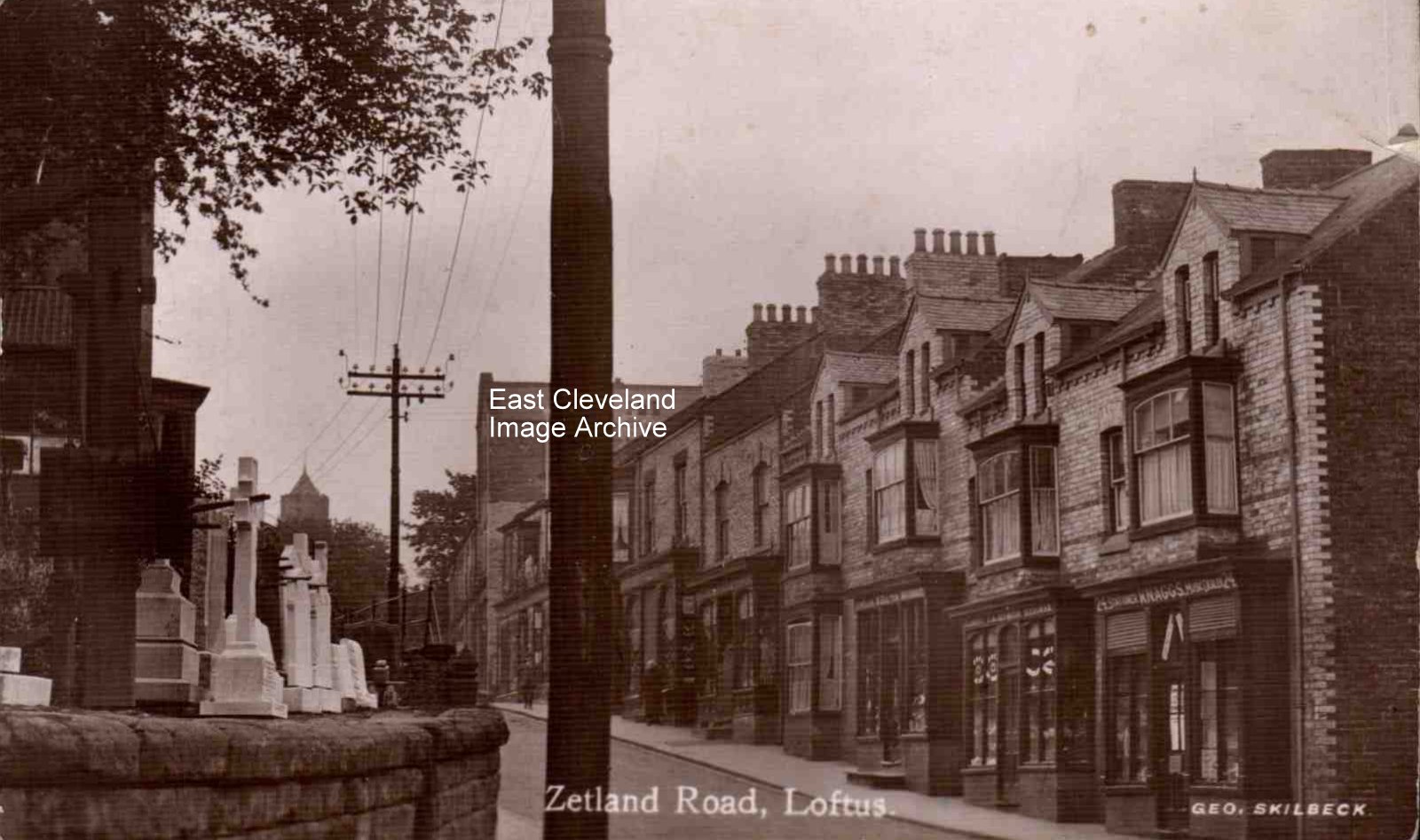 An early 20th century postcard image of Zetland Road, how quiet it seems to today. The poor pony and trap would not enjoy the same serene pace of traffic, And as for pedestrians on the road! Image courtesy of Joyce Dobson and Keith Bowers. 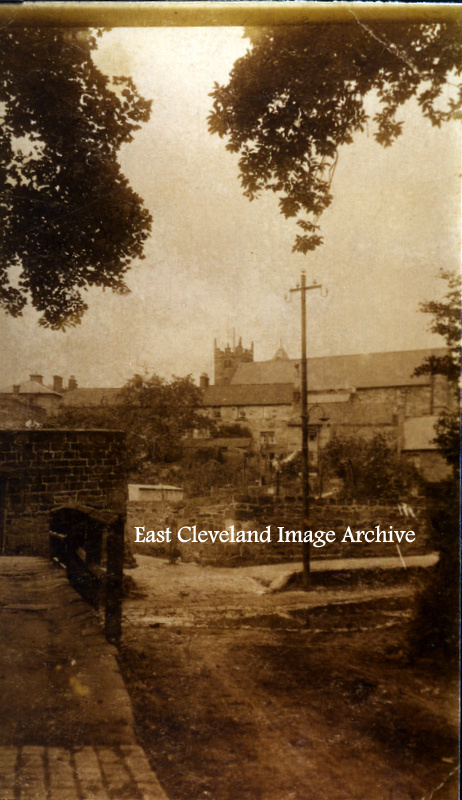 Another early view of Haugh Bridge; with the junction of Water Lane and the South Loftus road. Obviously a partially ‘made-up’ road system. Note how the water spreads across South Loftus Road; definitely somewhere to avoid in heavy rain. This is equally true in more recent times! Image courtesy of Joyce Dobson and Keith Bowers. 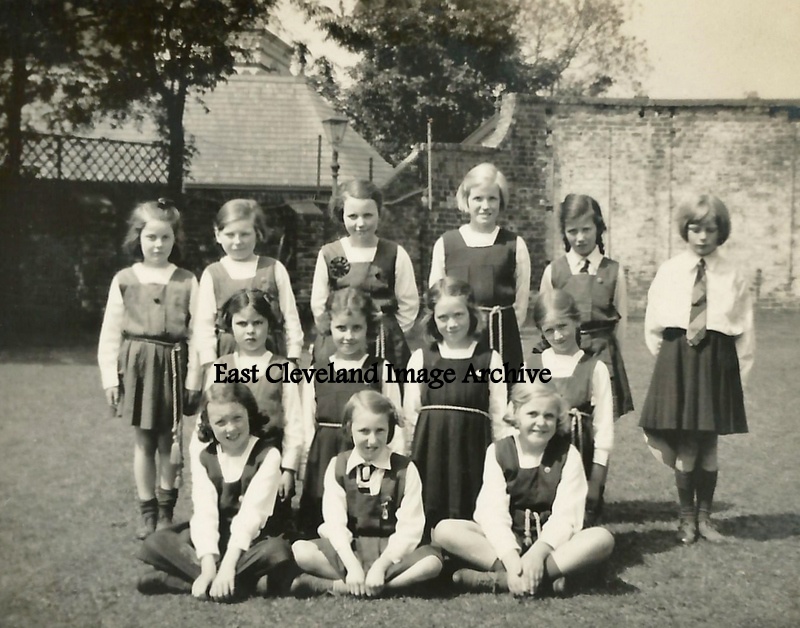 Jose Mawson, was a pupil at the Towers from 1937 to 1941, and was there when the school was evacuated to Rusland Hall in 1940. Her great friend was Patricia Burn; other friends were Elizabeth Leathly-Shaw, Hilary Toy, Anne Clinkard, Heather Dorman, Pamela Radge, Marie Locke, Rosetta Bolton, and Joan and Pam Howell – whose parents were in India. Her photo shows Jose and friends in the grounds of the School in c.1938. David Howell asks: “I am intrigued by the mention of Joan & Pam Howell, whose parents were in India. Could this be Joan and Sheila Howell – daughters of William Frederick Howell who worked for Jessop & Co Steel works in Calcutta, around this time. I am his son from his second marriage to Joan Hartley and these would be my half sisters. I would be most grateful for any additional information about them. My Dad also worked as an apprentice plater at the Skinning Grove Steelworks around 1917 before joining the RFC in the last year of the Great War.” Whilst Katharine Broome adds: “It is interesting to see this wonderful collection of photographs of The Towers. I went there for several months from late 1939 until it evacuated. My aunt Maureen Drake was one of the “big girls”. In later years, Anne Clinkard & I became great friends. After the school evacuated, I went to Upleatham Street School until it was bombed. Shortly after, our own house was destroyed by a bomb and we moved away until it was rebuilt in 1948. My main memory of the Towers is the horrid food – tripe and cochineal coloured tapioca pudding!” Image and information courtesy of Amanda Stobbs, thanks to David Howell and Katharine Broome for the updates. |
||
Recent Comments